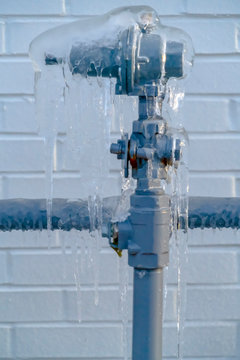Essential Approaches for Preventing Frozen Plumbing in Winter
Essential Approaches for Preventing Frozen Plumbing in Winter
Blog Article
What are your insights and beliefs about How to prepare your home plumbing for winter weather?

Winter can ruin your plumbing, especially by freezing pipelines. Below's just how to prevent it from occurring and what to do if it does.
Introduction
As temperatures drop, the danger of frozen pipelines boosts, potentially causing costly repair services and water damage. Understanding exactly how to prevent frozen pipes is critical for property owners in chilly environments.
Avoidance Tips
Insulating susceptible pipelines
Wrap pipes in insulation sleeves or utilize warmth tape to protect them from freezing temperatures. Concentrate on pipelines in unheated or outside locations of the home.
Heating strategies
Keep interior areas effectively heated, especially locations with pipes. Open cabinet doors to permit cozy air to distribute around pipelines under sinks.
Just how to determine frozen pipelines
Search for decreased water circulation from faucets, unusual odors or noises from pipelines, and visible frost on exposed pipelines.
Long-Term Solutions
Architectural modifications
Think about rerouting pipes away from outside walls or unheated areas. Add extra insulation to attic rooms, basements, and crawl spaces.
Upgrading insulation
Buy premium insulation for pipes, attics, and wall surfaces. Correct insulation assists keep consistent temperature levels and decreases the threat of frozen pipes.
Shielding Outdoor Plumbing
Yard hose pipes and outside faucets
Detach and drain pipes yard pipes before wintertime. Mount frost-proof faucets or cover outdoor taps with protected caps.
Understanding Frozen Pipes
What triggers pipes to ice up?
Pipes ice up when subjected to temperatures listed below 32 ° F (0 ° C) for extended durations. As water inside the pipelines ices up, it expands, taxing the pipe wall surfaces and potentially triggering them to break.
Threats and damages
Icy pipes can result in water system interruptions, building damages, and expensive fixings. Ruptured pipelines can flood homes and create extensive structural damage.
Signs of Frozen Water Lines
Recognizing icy pipelines early can avoid them from bursting.
What to Do If Your Pipelines Freeze
Immediate activities to take
If you suspect icy pipes, maintain faucets open up to soothe stress as the ice thaws. Utilize a hairdryer or towels soaked in warm water to thaw pipes slowly.
Verdict
Preventing icy pipelines calls for proactive steps and fast responses. By understanding the reasons, indicators, and preventive measures, home owners can secure their pipes throughout cold weather.
5 Ways to Prevent Frozen Pipes
Drain Outdoor Faucets and Disconnect Hoses
First, close the shut-off valve that controls the flow of water in the pipe to your outdoor faucet. Then, head outside to disconnect and drain your hose and open the outdoor faucet to allow the water to completely drain out of the line. Turn off the faucet when done. Finally, head back to the shut-off valve and drain the remaining water inside the pipe into a bucket or container. Additionally, if you have a home irrigation system, you should consider hiring an expert to clear the system of water each year.
Insulate Pipes
One of the best and most cost-effective methods for preventing frozen water pipes is to wrap your pipes with insulation. This is especially important for areas in your home that aren’t exposed to heat, such as an attic. We suggest using foam sleeves, which can typically be found at your local hardware store.
Keep Heat Running at 65
Your pipes are located inside your walls, and the temperature there is much colder than the rest of the house. To prevent your pipes from freezing, The Insurance Information Institute suggests that you keep your home heated to at least 65 degrees, even when traveling. You may want to invest in smart devices that can keep an eye on the temperature in your home while you’re away.
Leave Water Dripping
Moving water — even a small trickle — can prevent ice from forming inside your pipes. When freezing temps are imminent, start a drip of water from all faucets that serve exposed pipes. Leaving a few faucets running will also help relieve pressure inside the pipes and help prevent a rupture if the water inside freezes.
Open Cupboard Doors
Warm your kitchen and bathroom pipes by opening cupboards and vanities. You should also leave your interior doors ajar to help warm air circulate evenly throughout your home.

As an avid reader about Preventing and dealing with frozen pipes, I assumed sharing that excerpt was smart. Enjoyed our write-up? Please share it. Let somebody else locate it. Thank-you for your time invested reading it.
Schedule Services Report this page